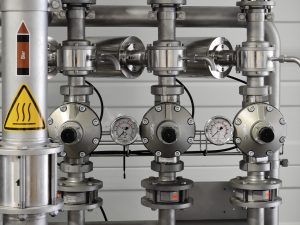Energy generation from fossil fuels is a global challenge. As the concerns for carbon emission increases, scientists are working hard to discover more sources of renewable energy. One of the innovations that reduce the dependence of non-renewable fuels is the conversion of methane from biosolids to energy.
The application of biogas (from sewer pipes) for energy generation isn’t a new invention, but nobody thought of this source many decades ago. However, this article focuses on how we can generate energy from sewerage gases.
Basic Understanding of How Methane Is Extracted
The anaerobic digestion of wastewater (sludge) occurs in treatment systems. Normally, the decomposition of sludge in sewer systems doesn’t need oxygen. This process of anaerobic (absence of oxygen) digestion often releases methane. Apart from methane, wastewater contains contaminants like carbon dioxide (CO2) and hydrogen sulphide. Methane is one of the reasons for the foul odour that you can smell in the event of a sewer blockage.
Generating electricity and heat from natural gas requires technology. An anaerobic digester is a bioenergy technology that extracts methane and discharges these contaminants. It costs millions of dollars to install and operate a large-scale digester facility.
Usually, sewage from residential, commercial, and industrial locations flows to treatment plants. Agricultural wastes also constitute wastewater is that flows to treatment plants. After the raw sewage pass through thermal hydrolysis chambers, they undergo anaerobic digestion. Usually, engineers use this pretreatment chamber to provide energy for sludge converters. It’s a smart way of meeting their energy needs and reducing the cost of running sludge-converting plants.
When organic waste occurs in an oxygen-free surrounding –such as heavy in a landfill –it releases methane gas. This methane is captured and used to produce energy, instead of being discharged into the atmosphere.
Before methane is distributed as biogas, it must be purified and compressed. Renewable natural gas is characterised by its high pressure and flammability. Apart from digesters, methane gas can be extracted from a landfill. It is more common than you think; it can even be found in a blocked kitchen sink which has not been treated for some time due to the decomposition of the waste materials.

In the sewage, sewage treatment techniques begin treating wastewater by collecting good sludge. In a sludge-to-energy system, this sludge then undergoes a pretreatment procedure called thermal hydrolysis to maximise the sum of methane it could produce. Next, the treated waste enters an anaerobic digester, which finishes breaking down it. The resulting product is methane-rich gasoline or biomass, that can be used for on-site energy demands, or processed further and used in place of natural gas. In addition, the strong remnants of this waste to create a nutrient-rich “digestate” that can be added to soil to boost plant growth.
Regardless of how biogas is harvested, methane is a natural gas that has environmental and economic benefits. Methane is a pure type of biogas from sewerages because of its hydrocarbon contains the lowest amount of carbon atom. However, carbon dioxide is a by-product and environmental pollutant when methane is released.
One of the advantages that sludge-to-energy converters have over landfills is the chance of boosting methane production. Also, the treatment process of converters produces plant nutrients that are called ‘digestates.’
What Are The Benefits of Converting Wastewater to Renewable Energy?
- Methane provides on-demand heat and electricity for consumers
- This renewable natural gas (RNG) is clean energy and a better alternative for fossil fuels.
- Methane from sewer pipes is an efficient fuel for production plants and commercial vehicles.
- This conversion encourages the production of algae and biofuel from wastewater
- Emission-reduction is another benefit of converting wastewater to biogas. Since methane is a greenhouse gas, the sludge-to-energy converter prevents the emission of this gas into the atmosphere. Without this system, it will be difficult to reduce the effects of climate change. Low concentrations of carbon dioxide are discharged during the utilisation of methane. However, it’s negligible when you compare with carbon dioxide from the consumption of fossil fuels.
- Sludge-to-energy converters are eco-friendly systems. It means that by-products of this methane conversion process are handled safely in treatment plants. Unlike solid waste and sludge that are dumped in landfills, this sludge-to-energy process is a solution to environmental pollution.
The Challenges of Utilising Biogases from Sewage Systems
There’s an increasing demand for clean energy because of the global concern for climate change. The challenge of converting methane from sewer pipes to energy is not access to the source. Instead, it’s the investment that is needed to build infrastructure for treatment, compression, and distribution.
As scientists seek more sources of renewable energy, the poor handling of municipal solid waste and sludge will remain a threat to public health. Apart from electricity and heat, fuel cells of modern vehicles will be more efficient if we have zero carbon in derivatives of renewable energy.



